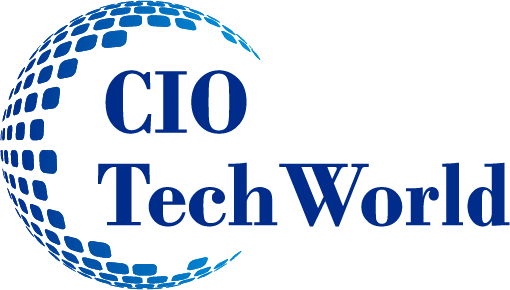In today’s digital age, businesses rely heavily on their assets to drive growth and success. Assets, whether physical or digital, play a crucial role in the operations of an enterprise. However, without proper optimization, these assets may not yield the desired results. Asset optimization involves maximizing the value and performance of assets throughout their lifecycle. By implementing effective strategies, businesses can improve operational efficiency, reduce costs, increase productivity, and enhance customer satisfaction. Let’s delve into the key strategies that can help achieve asset optimization in enterprise environments.
Understanding Asset Optimization
Asset optimization is the process of leveraging resources and tools to extract the maximum value and performance from assets. It involves a systematic approach to managing assets, ensuring their availability, reliability, and efficiency. Effective asset optimization focuses on minimizing downtime, reducing maintenance costs, and prolonging asset lifespan. By optimizing assets, businesses can achieve better returns on investment and gain a competitive edge.
Conducting a Comprehensive Asset Audit
Before implementing any asset optimization strategy, it is essential to conduct a comprehensive asset audit. This involves identifying and cataloging all assets within the enterprise. The audit provides insights into asset condition, location, and usage patterns. By understanding the current state of assets, businesses can make informed decisions about optimization priorities and allocate resources accordingly.
Establishing Key Performance Indicators (KPIs)
To measure the effectiveness of asset optimization efforts, it is crucial to establish Key Performance Indicators (KPIs). KPIs help monitor and evaluate the performance of assets against set targets. Examples of asset optimization KPIs include asset uptime, maintenance costs, asset utilization, and mean time between failures. By tracking these metrics, businesses can identify areas for improvement and take corrective actions promptly.
Implementing Predictive Maintenance
Predictive maintenance is a proactive approach to asset management that uses data and analytics to predict potential failures and schedule maintenance activities accordingly. By leveraging advanced technologies such as sensors, machine learning, and AI, enterprises can monitor asset health in real-time and detect anomalies. Predictive maintenance reduces unplanned downtime, optimizes maintenance schedules, and prolongs asset lifespan.
Embracing Automation and IoT Technologies
Automation and the Internet of Things (IoT) play a significant role in asset optimization. By integrating smart sensors and devices, businesses can collect real-time data on asset performance, usage, and environmental conditions. This data enables predictive analytics, improves decision-making, and facilitates preventive maintenance. Automation and IoT technologies streamline processes, enhance operational efficiency, and drive asset optimization.
Leveraging Data Analytics for Decision Making
Data analytics provides valuable insights into asset performance and usage patterns. By analyzing historical and real-time data, businesses can identify trends, anomalies, and areas for improvement. Data-driven decision-making allows for proactive asset optimization strategies, such as optimizing maintenance schedules, predicting failure points, and identifying cost-saving opportunities. Leveraging data analytics helps enterprises make informed choices that maximize asset value.
Adopting a Lifecycle Approach
Asset optimization should encompass the entire asset lifecycle, from acquisition to disposal. By adopting a lifecycle approach, businesses can make informed decisions at each stage. This includes selecting the right assets, optimizing their usage, maintaining them effectively, and retiring them when no longer beneficial. A holistic view of asset management ensures long-term optimization and prevents wastage of resources.
Ensuring Regulatory Compliance
In enterprise environments, compliance with industry regulations and standards is crucial. Asset optimization strategies should align with regulatory requirements to avoid legal and financial consequences. By incorporating compliance measures into asset management processes, businesses can mitigate risks, ensure safety, and maintain a positive reputation. Compliance-driven asset optimization safeguards business operations and promotes ethical practices.
Enhancing Security Measures
With the increasing reliance on digital assets, ensuring their security is paramount. Effective asset optimization includes robust security measures to protect assets from cyber threats, data breaches, and unauthorized access. This involves implementing encryption, access controls, intrusion detection systems, and regular security audits. By safeguarding assets, businesses can maintain continuity, protect sensitive information, and build trust with customers.
Encouraging Collaboration and Communication
Asset optimization is a collective effort that requires collaboration and communication across departments and teams. By fostering a culture of collaboration, businesses can share knowledge, insights, and best practices. Effective communication ensures that all stakeholders are aligned with asset optimization goals and strategies. Collaboration and communication facilitate cross-functional problem-solving, enhance efficiency, and drive continuous improvement.
Implementing Change Management Strategies
Successful asset optimization requires effective change management strategies. As new technologies, processes, and practices are introduced, it is crucial to manage the transition smoothly. Change management involves assessing the impact of changes, engaging stakeholders, providing training and support, and monitoring progress. By implementing change management strategies, businesses can overcome resistance, embrace innovation, and achieve sustainable asset optimization.
Employee Training and Skill Development
To optimize assets effectively, businesses need skilled and knowledgeable employees. Providing training and skill development programs ensures that employees have the necessary expertise to manage assets efficiently. Training programs should cover areas such as asset maintenance, data analytics, automation, and security. By investing in employee development, businesses can enhance asset optimization capabilities and drive continuous improvement.
Continuous Monitoring and Improvement
Asset optimization is an ongoing process that requires continuous monitoring and improvement. Regular audits, performance evaluations, and feedback loops help identify areas for optimization. By monitoring key metrics, analyzing data, and soliciting feedback from stakeholders, businesses can identify opportunities for refinement and innovation. Continuous monitoring and improvement enable businesses to stay adaptive, responsive, and competitive in dynamic environments.
In today’s rapidly evolving business landscape, effective asset optimization is critical for sustainable growth and success. By implementing key strategies such as conducting comprehensive audits, embracing automation and IoT technologies, leveraging data analytics, and fostering collaboration, businesses can maximize asset value and performance. Furthermore, ensuring regulatory compliance, enhancing security measures, and investing in employee training contribute to long-term asset optimization. By adopting a holistic and proactive approach to asset management, enterprises can achieve operational excellence, reduce costs, and gain a competitive advantage.










